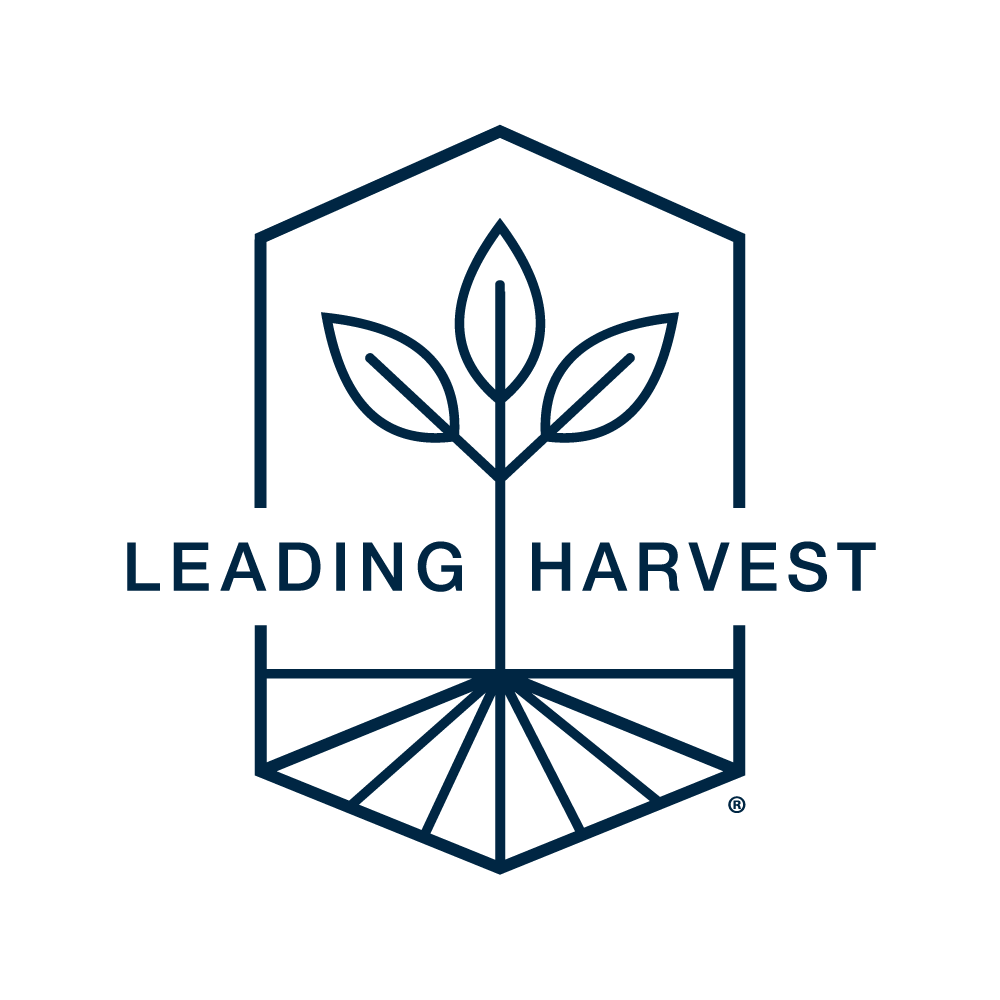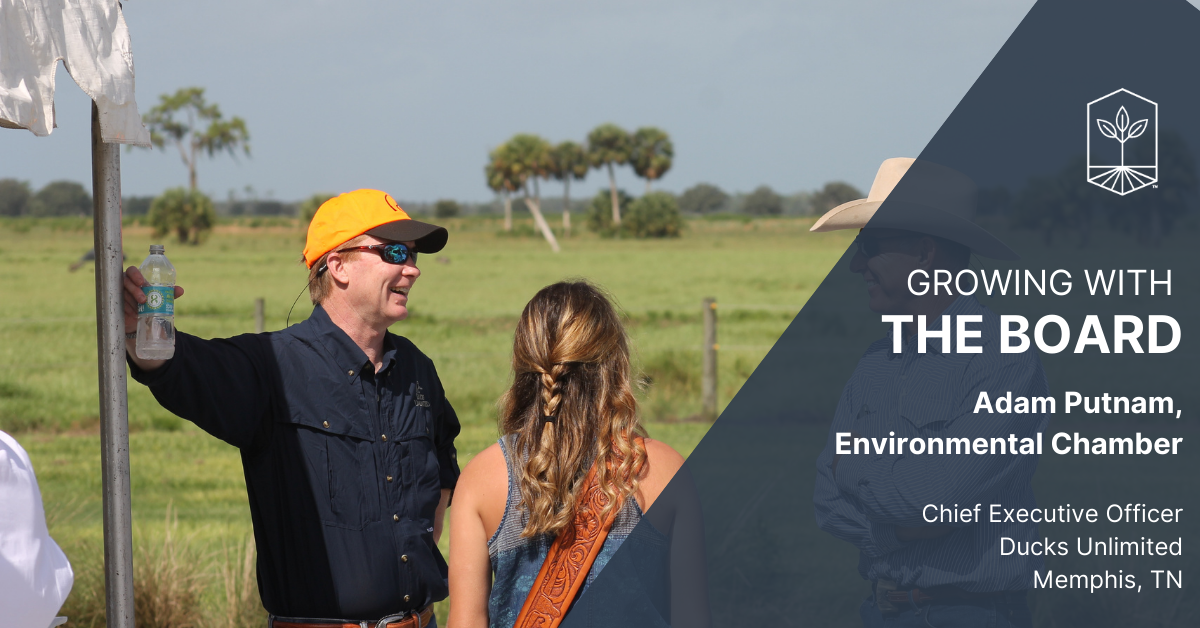
Adam Putnam
1. How did you become involved in agriculture?
Growing up on a third-generation family citrus and cattle operation and being very involved in 4H and FFA, I have always been involved in agriculture. I joke that I consider myself a land grant baby: I grew up in 4H, studied agricultural economics at a land grant university, and have benefitted as a farmer and rancher from the research produced by the land grant system.
2. What do you believe is the most pressing agricultural issue the marketplace faces today?
The marketplace is plagued by a wide awareness gap that exists between a public who is accustomed to immediate, year round access to global food choices and the ag production practices required to make that possible. These steps include where and how food is grown and harvested, how animals are raised, what incomes are required and what trade flows are necessary to satisfy (in the developed world) a Food Network trained palate, much less to meet the caloric demands of 10 billion people on earth. The vast gap between understanding how the world actually gets fed and the expectations inherent in an on-demand society, generations removed from the land will continue to be a problem for farmers and ranchers.
3. The Standard spans the entire supply chain. If you could trade places with anyone in the agricultural and food system, who would it be and why?
There are some tremendous thought leaders up and down the supply chain and we are fortunate that there is a deep bench of talent amongst this group to address today’s issues. I wouldn’t trade places with these leaders, but I feel fortunate to be at the intersection of their work as a farmer and CEO of the largest wetlands’ conservation organization. I feel I stand at the crossroads of doing what’s right for land, air, and water and what is just for the men and women who feed our planet.
4. What three words would you use to sum up the future of agriculture?
Florida is a unique agricultural state. It is the second largest agricultural state by value in the country with over 300 commodities. It is also a state that is growing by 1,000 new residents per day. Managing the future of a thriving agriculture industry alongside a population that is generally not from an agricultural background made every day as commissioner a lesson in communications strategy. I needed to tell the story of a modern and tech-driven agricultural industry that is important to the economy and to the protection of the natural resources of the state. Every day as commissioner was a new opportunity to tell agriculture’s story to people who were in most cases multiple generations removed from the land itself. Agriculture is not a history museum; it is an important part of our economy now and in the future. Too many individuals view agriculture as a petting zoo or historical re-enactment, and do not give it credit for the role it plays in the economy and global trade. Often, when the scale of agriculture is realized, it is painted as a negative. My years as commissioner taught me the value of redefining the farmer and rancher narrative in the nonfarm citizen’s mind.
5. What makes the Leading Harvest Standard different from the others?
Everyone is for it, but no one can define it. Throughout any conversation about sustainability it is important to give farmers and ranchers credit for their responsible land stewardship. Had their lands been developed in prior generations, the outcomes could have been far worse for the environment. Farmers and ranchers want to know that whatever sustainability requirements are put on them will not undermine their ability to be in business. They are not only undervalued for their marginal improvements, but they are also not being recognized in the marketplace for their overall benefits, spanning decades or more. This is an imbalance that needs to be addressed by the markets. The best practices are not getting a premium for their efforts and investments, and the worst aren’t seeing a discount in what they’re paid.
6. Why do you think some farmers are wary of pursuing certifications?
It is only human nature to be concerned about the value proposition and ROI for certifications. With certifications comes additional paperwork and lost time spent on monitoring and compliance, as there is no sustainability department or compliance unit in small and medium sized operations, especially those family owned. This is lost motion if there isn’t a reward for your efforts. We have to be able to answer: what is the additional value of earning the seal of approval? We need to show farmers that the markets recognize their work. This is often difficult in a commoditized market, but it is essential for the success of these certifications.
7. How could a universal standard affect consumer trust in supply chains amidst a pandemic?
The good news is the pandemic has raised awareness of the fragility of the food supply chain as people spend more time and prepare more meals at home. They are paying attention to their food and the impact that the pandemic has played on its availability. We hope consumers will actively seek out brands and products that have a recognizable certification for sustainability standards, rooted in science based rigor. A universal standard could reduce the confusion surrounding the many options consumers face when they head to the store and make these choices.
8. Now as the CEO of Ducks Unlimited you are focused on conserving habitat important to waterfowl, what role does conservation play in sustainable agriculture?
Conservation and sustainable agriculture are synonyms in my mind. The future of conservation is largely in the hands of the working landowners around the world, beginning here at home. Farmers and ranchers, as well as hunters and anglers, are the original environmentalists. Farmers and ranchers have the greatest financial incentive to be the best stewards of the land to preserve their livelihoods and those of future generations. DU believes in the practical solutions on the land that allow farmers to be farmers while conserving the highest value wetland and wildlife landscapes. Farmers and ranchers who manage their land with those other benefits in mind often are also the most profitable farmers. They are not wasting inputs on marginal lands, and are supporting wildlife and other ecosystem benefits. They secure buffers and protect wetlands that filter nutrients and provide alternative revenue streams through hunting leases and other benefits. As supply chain pressure continues to build on farmers and ranchers to follow new standards, organizations like DU are a natural partner and ally to sort through the pressure of the markets and accomplish farm profitability while furthering conservation efforts.




